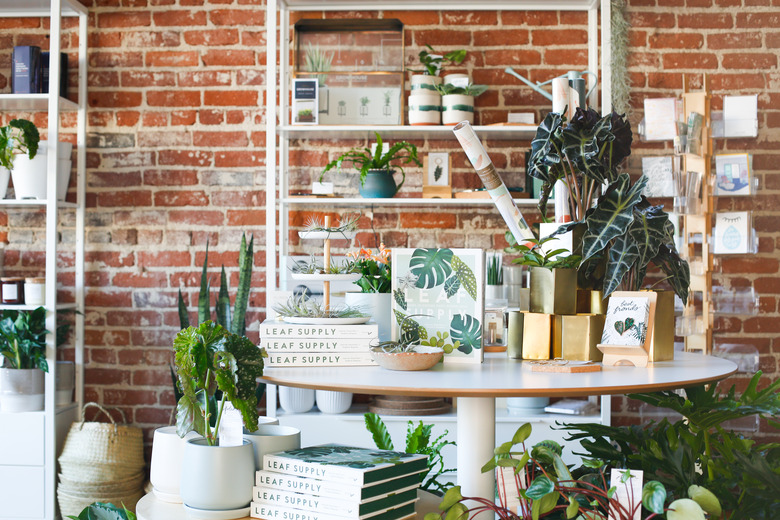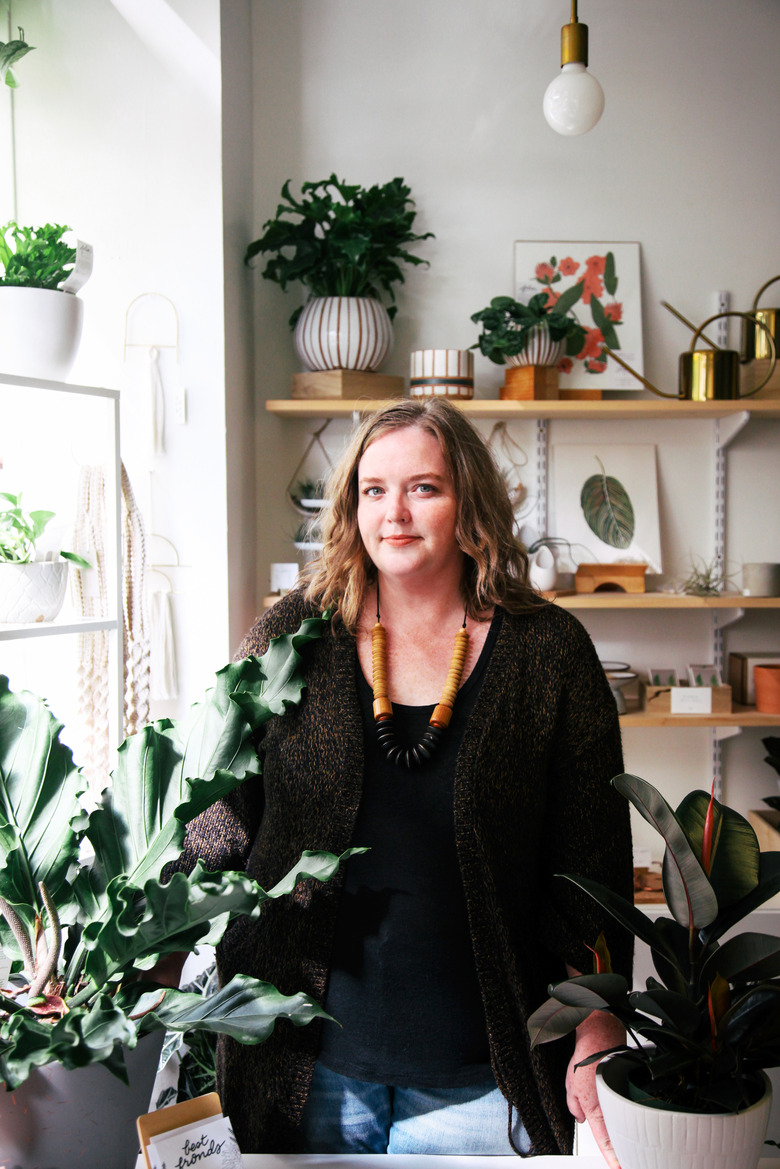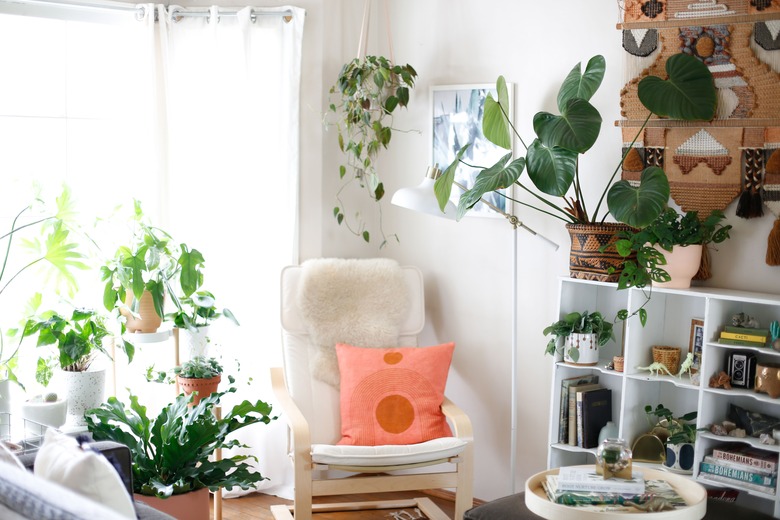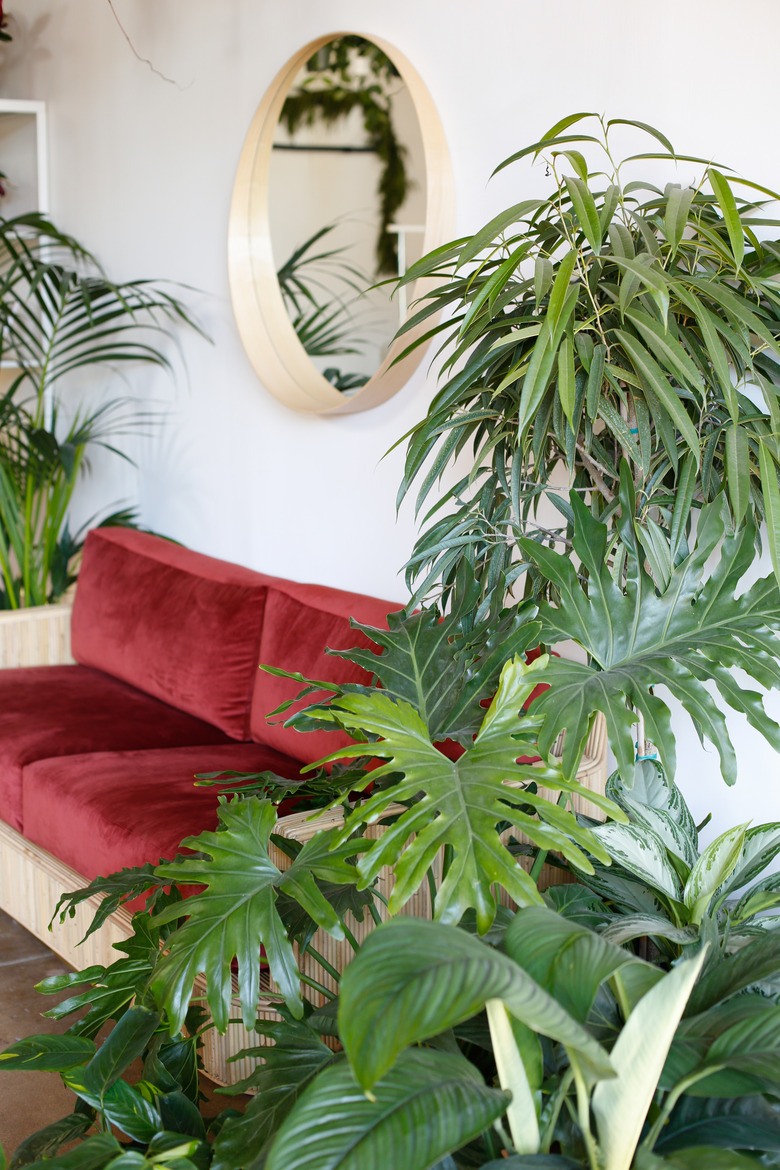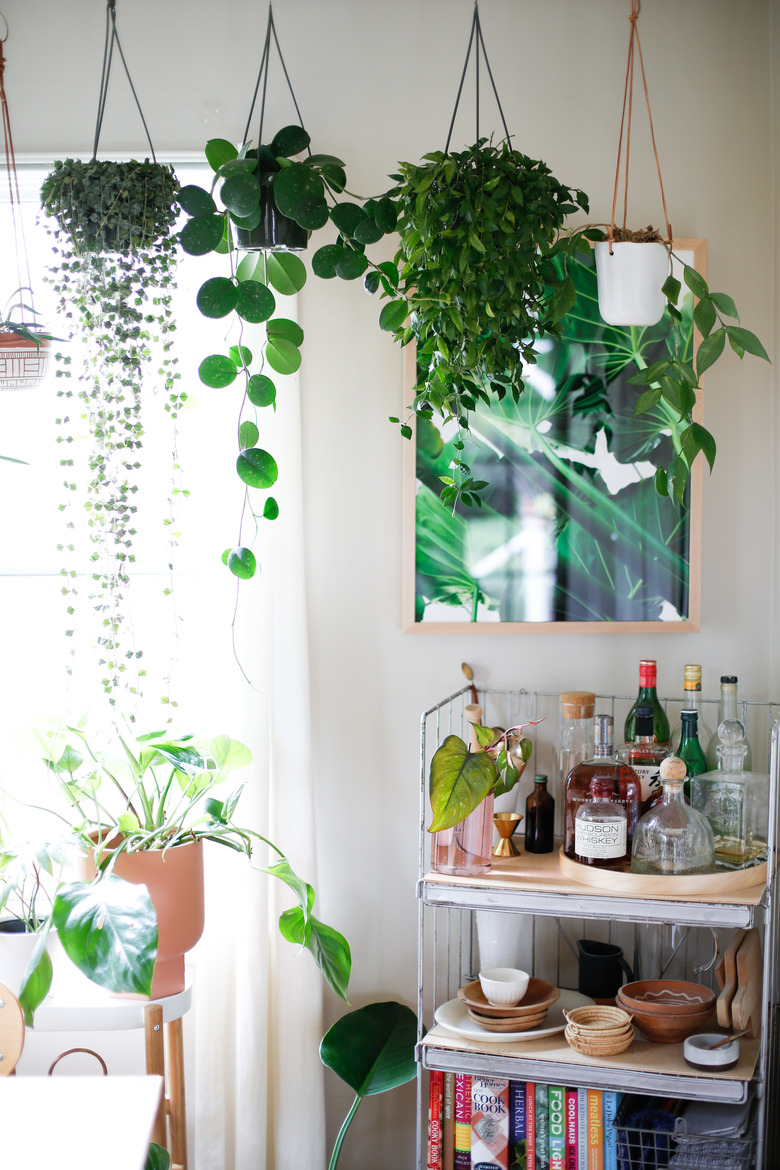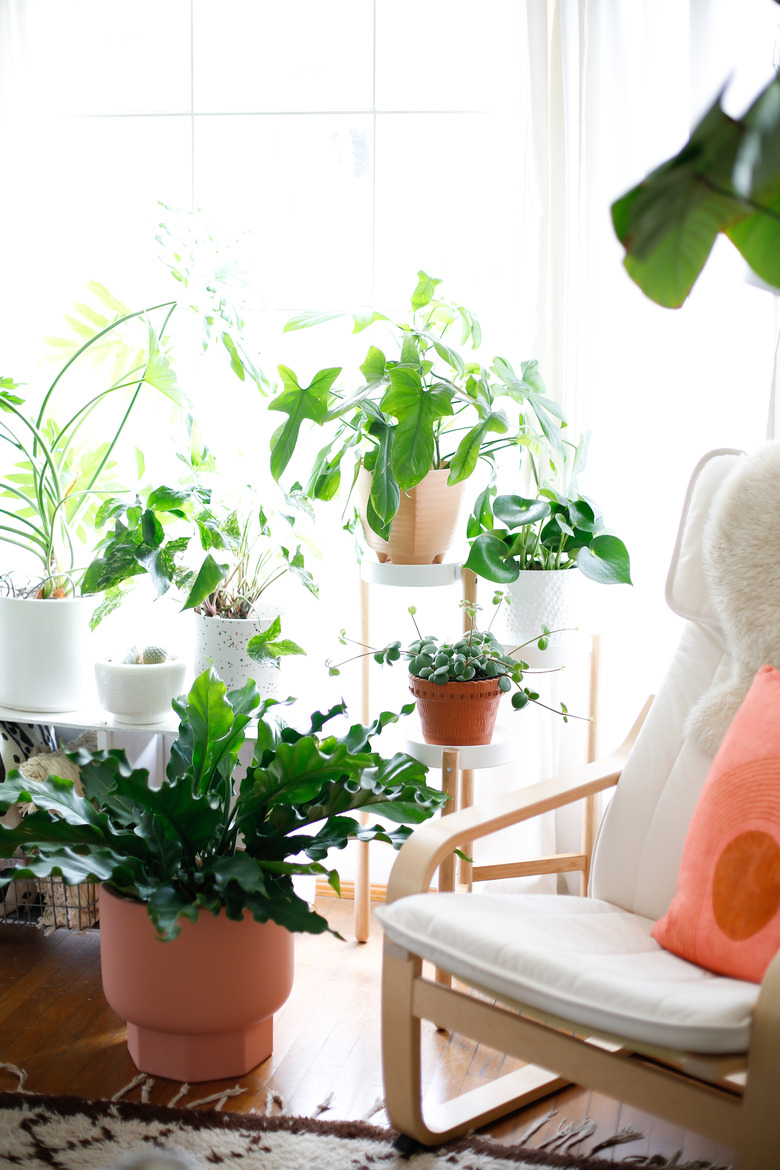6 Things All Plant Beginners Should Know, According To An Expert
We may receive a commission on purchases made from links.
When we think about our dream space, we often imagine ourselves in a relaxed, lush setting. Maybe there are hanging plants around us, or one giant monstera plant sprouting against the wall nearby. There are pops of green here and there, making for a calming and chic space.
But then we snap back to reality and remind ourselves: Oh, that means we'd have to learn how to actually keep those plants alive. Luckily, we recently got to attend Folia Collective's workshop at LA Design Festival, "Designing With Plants: Choosing the Right Plant For Your Space." And we learned a lot. Founder Danae Horst formerly worked as the editorial director for Justina Blakeney's Jungalow, and she now runs the Folia Collective shop in Eagle Rock.
Here are some gems of wisdom that we took away from the workshop:
1. You Don't Have a Black Thumb
1. You Don't Have a Black Thumb
Many of us swear that we simply have a black thumb and there's nothing we can do about it. Horst wants to convince us otherwise. "If you take the time to assess what you can realistically provide for a plant, choose plants based on that assessment, and learn more about the plants you have and their specific care needs, anyone can keep plants happy and healthy," Horst tells Hunker.
Some good choices for beginners include the ZZ plant and sansevieria (aka snake plant), both of which can "tolerate lower light if needed" and don't need tons of watering; Epipremnum aureum, or golden pothos, have leaves that "begin to get softer and floppier" to indicate when it needs watering; and philodendron, which require little maintenance "as long as you have a spot with bright, filtered light for them."
2. Light Comes First
2. Light Comes First
Before you even begin the search for a plant, take stock of the space around you. Where does the light come in and from which direction? While this might seem like basic info, it can make a huge difference. Plus, Horst recommends that you pay attention to how the light changes throughout the day.
Don't fret, though: You can make some small changes to help. For example, if you happen to have a super sunny spot but your plant only needs medium light, Horst recommends buying items like white IKEA curtains to filter the light. It's easier to adjust a space with too much light, rather than one with not enough. And a note on window placement: Don't just place medium- to high-light plants next to a window, make sure they can soak in the sun properly.
3. Be Realistic, Not Aspirational
3. Be Realistic, Not Aspirational
Take a good, hard look at your current lifestyle and be honest — what things can you actually change? For starters, think about small habits. Will you actually keep the blinds open in your living room all day for your plant to bask in its glow? Or do you always keep them shuttered so that nosy neighbors can't see inside?
If you travel a lot, don't assume that you'll suddenly change your schedule because of your new plant. See if you can find a solution — like an S.O. who can help, or someone you can pay — and if not, pick a plant that needs less attention. When you're searching for a new plant buddy, visit "local nurseries and plant shops" — Horst says that plants at "specialized shops are often better cared for than those in stores that sell thousands of different items."
4. Do Your Research
4. Do Your Research
The plants that you might see in Pinterest images and Instagram posts might not be that easy to take care of IRL. Horst stresses that a lot of these plants might be seasonal, rare, or just difficult to maintain.
"It's hard to resist bringing a plant home just because it's beautiful, even if you know you don't have enough light, humidity, time to care for it, et cetera," Horst says. "Resisting those urges and sticking with plants that are a good match for your space, light conditions, lifestyle, and personality will lead to happier, healthier plants."
And while a plant might catch your eye based on its beauty, there are a few other things you should check for, too. "Look closely at leaves and soil to make sure you don't see any pests," Horst says. "Healthy potting mix should smell like fresh earth, not gross, so check the smell."
5. Check Your Water Levels
5. Check Your Water Levels
Too much water, or not enough, can make a big difference. Even plants that require little water should still get the right amount of water every time. In other words, if you only water a plant on occasion, make sure the water actually reaches its root system. You can use tools like this moisture sensor meter to check on your plants.
In addition, some plants can dry out completely between watering while others need to stay half-moist. You don't want to overwater your plants because water that pools at the bottom can suffocate the roots. Another downside: standing water can attract pests. Choosing a planter with a drainage hole at the bottom can help with this. You can also use a tool to create a hole at the bottom of your favorite piece.
6. Wait a Little After Repotting
6. Wait a Little After Repotting
The process of repotting can create stress for your plant. It needs time to readjust to its new container, so Horst recommends waiting five days after repotting to water it. When you decide to take on repotting, keep in mind the material of the new pot. Terra cotta, for example, causes the soil to dry out more quickly.
Be sure to measure the diameter of your plant and the new planter before repotting. If you're moving your plant to a hanging planter, remember that this will change the way you water it. You'll need to take down each plant for watering, so be sure you can work that extra maintenance time into your schedule.
